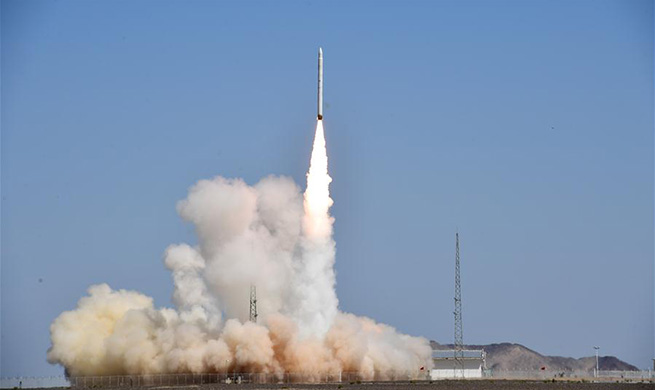BEIJING, Aug. 18 (Xinhua) -- The following are the highlights of China's key technology news from the past week:
COMMERCIAL CARRIER ROCKET
China's new carrier rocket Smart Dragon-1 (SD-1), designed for commercial use, made its maiden flight on Saturday, sending three satellites into planned orbit.
The rocket, developed by the China Rocket Co. Ltd. affiliated to the China Academy of Launch Vehicle Technology (CALVT), blasted off from the Jiuquan Satellite Launch Center in northwest China.
Different from the carrier rockets of the Long March family, the new Dragon series is developed in a commercial mode to meet the market demand of launching small commercial satellites, said Wang Xiaojun, head of CALVT.
INTELLIGENT CONNECTED EXPRESSWAY
China's first intelligent connected expressway in the eastern province of Shandong began automatic driving tests on Friday, according to Qilu Transportation Development Group.
With three tunnels, three tollgates, a bridge and numerous longitudinal slopes that simulate real road situations, the 26-km-long test section perfectly meets test conditions.
FULL-DIGITAL PET
China's first home-developed full-digital positron emission tomography (PET) scanner has completed multiple clinical cases of brain imaging.
It was recently installed in the First Affiliated Hospital of Sun Yat-Sen University in the southern Chinese city of Guangzhou, Guangdong Province.
Mainly used for early diagnosis and accurate treatment of neurological diseases such as brain tumors and Parkinson's disease, the equipment is believed to be the world's first full-digital PET exclusively developed for cerebral imaging.
HIGH-YIELDING RAPESEED
Chinese researchers have used gene-editing technology to develop a new type of high-yielding rapeseed, according to the Chinese Academy of Agricultural Sciences (CAAS).
Plant height and branch number are essential components of rapeseed plant architecture and are directly correlated with its yield. Improvement of plant architecture is a major challenge in rapeseed breeding.
Researchers from the Oil Crops Research Institute of CAAS used CRISPR/Cas9 gene-editing tool to knock out the gene called BnaMAX1s in rapeseed, which resulted in a rapeseed variety with reduced height, increased branch number and more siliques. The yield per plant increased by about 30 percent.

















